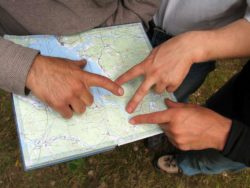Top Class Actions’s website and social media posts use affiliate links. If you make a purchase using such links, we may receive a commission, but it will not result in any additional charges to you. Please review our Affiliate Link Disclosure for more information.
From nostalgia to trauma, when we think of the Boy Scouts in 2020, we may feel some complicated emotions. The organization was formed with a focus on selflessness and patriotism, but the history of the Boy Scouts has been far from smooth or innocent.
The Boy Scouts established a Blacklist of Volunteer Abusers just ten years after its inception and had removed thousands of abusers from the Boy Scouts by 1935. While this issue was originally kept from public knowledge, Americans now recognize the potential hazards of these sorts of organizations, and as a result, membership has been falling for years.
According to the Boy Scouts of America, they currently have roughly 2.2 million youth members and 800,000 volunteers. However, in 2013, PBS reported Boy Scout membership was at 2.6 million, down from nearly 4 million in the early 2000s, even after allowing girls to join. Despite these falling numbers, new litigation against the Boy Scouts and their treatment of both members and abusers are filed every year.
When Did Boy Scouts Start?
According to the History Channel (History), the history of Boy Scouts began in the year 1908 when a book called Scouting for Boys became widely popular among English boys. Thousands of boys bought the handbook and began forming Boy Scout troops across Britain. However, this book was actually a version of Aids for Scouting, a military handbook by the same author, written for boys.
These two books became wildly popular with young boys, and troops began following the tracking lessons and organizing elaborate games using the information in the books. Soon after, the Boy Scouts would be formally created by the author of these books.
Who Started Boy Scouts?
It may be surprising to hear that the history of Boy Scouts began with a book given the hands-on outdoors nature of the organization today. However, it makes more sense once you consider the author of that book. Robert Baden-Powell served in the British military and became a national hero in 1900 after carrying out a 217-day defense of Mafeking during the South African War. After the war, his book on military scouting became popular across the country.
Encouraged by this interest, Baden-Powell decided to write a version of his book for boys in 1908. Baden-Powell wrote “Scouting for Boys” to teach boys about the basics of scouting: camping, woodcraft, boating, observation, deduction, patriotism, lifesaving, and chivalry. When the book and its predecessor, Aids to Scouting, blew up in popularity with English boys, Baden-Powell decided to “try out” his ideas on an actual group of boys. And thus the Boy Scouts was formed.
How Did Boy Scouts Start?
In 1907, Baden-Powell took 21 adolescent boys to an island in Dorsetshire to teach them scouting while camping for a fortnight. Baden-Powell taught lessons on scouting using games and lessons that were very popular among the scouts. After the success of this first trip and Scouting for Boys, Baden-Powell decided to set up a central Boy Scouts office and design a uniform.
By 1908, History reports that the Boy Scouts had 60,000 members. The first national Scout meeting was held in London in 1909 and included a group of girls calling themselves Girl Scouts. Girl Guides would later be established by Baden-Powell as a separate organization.
Who Brought Boy Scouts to America?
The history of Boy Scouts actually came in a few phases. First, the organization gained broad popularity in Britain. Soon after, William Boyce, an American publisher, got lost in the fog in London until a Boy Scout came to his aid. The boy led Boyce to his destination and refused any sort of reward.
Boyce was so impressed by the boy’s selflessness that he decided to organize youth organizations in the U.S. into an American version of the Boy Scouts. The groups were incorporated in 1910 and soon spread throughout the U.S.
History of Boy Scouts Sexual Abuse

The history of sexual abuse in the Boy Scouts likely reaches back nearly to its inception. The organization has provided names of confirmed and suspected abusers dating as far back as 1944, but the blacklist was established more than 20 years earlier. The Boy Scouts established the “blacklist” of volunteers in 1910; that list now holds more than 7,500 names, according to Fox8.
The Boy Scouts of America organization has identified more than 12,000 victims of abuse across all fifty states. According to Fox8 sources familiar with the matter, there is no evidence that the Boy Scouts intentionally orchestrated a cover-up of this information.
The blacklisted volunteer cases are divided into six categories: morals, leadership, financial, perversion, theft, and criminal. The perversion cases make up the majority of those named, and are behind many of the lawsuits filed against the organization today. The addition of look-back windows for abuse victims also bypassed the statute of limitations in many states, enabling additional lawsuits to be filed.
How is Bankruptcy Affecting the Boy Scouts Organization?
The national organization of the Boy Scouts of America declared Chapter 11 bankruptcy in February, but said local councils that operate without financial assistance from the national headquarters would not be affected by the financial maneuver.
Even though the Boy Scouts of America is currently facing around 10,000 sexual abuse lawsuits, more cases may be filed before the Nov. 16th deadline. Even though many states enacted child victim laws that allow look-back windows for now-adult victims of child sexual abuse anywhere from one to three years to bring forth lawsuits against the perpetrators and any organization that helped hide the abuse, the bankruptcy deadline of Nov. 16th to file such claims takes precedence.
Bloomberg News recently reported some attorneys have expressed concern that local Boy Scout councils have been making asset transfers, perhaps in an effort to have less money available to resolve sexual abuse lawsuits. The Boy Scouts’ lawyers argue that because of the coronavirus pandemic, many local money-making endeavors such as summer camps have been unable to be held, which only adds to the financial crunch.
Similar to the Catholic Church’s victims’ fund, the Boy Scouts of America has created its own Victim’s Compensation Trust to “equitably compensate all victims of past abuse in our programs,” according to an open letter on the BSA website from National Chair Jim Turley.
The BSA website also says about 90 percent of sexual abuse claims against the organization refer to incidents that happened more than 30 years ago. The BSA says enhanced protections for youth now include mandatory youth protection training, a ban on one-on-one contact between an adult and youth, use of the Volunteer Screening Database recommended by the CDC and prompt mandatory reporting to law enforcement authorities when abuse is alleged or suspected.
Join a Free Boy Scouts of America Sexual Abuse Class Action Lawsuit Investigation
If you or someone you love suffered from sexual abuse in the Boy Scouts of America, you may qualify to join this Boy Scout sexual abuse class action lawsuit investigation.
See if you qualify by filling out the free form on this page.
This article is not legal advice. It is presented
for informational purposes only.
ATTORNEY ADVERTISING
Top Class Actions is a Proud Member of the American Bar Association
LEGAL INFORMATION IS NOT LEGAL ADVICE
Top Class Actions Legal Statement
©2008 – 2024 Top Class Actions® LLC
Various Trademarks held by their respective owners
This website is not intended for viewing or usage by European Union citizens.
Get Help – It’s Free
Join a Free Boy Scouts of America Sexual Abuse Class Action Lawsuit Investigation
If you qualify, an attorney will contact you to discuss the details of your potential case at no charge to you.
PLEASE NOTE: If you want to participate in this investigation, it is imperative that you reply to the law firm if they call or email you. Failing to do so may result in you not getting signed up as a client or getting you dropped as a client.
E-mail any problems with this form to:
Questions@TopClassActions.com.
Oops! We could not locate your form.













